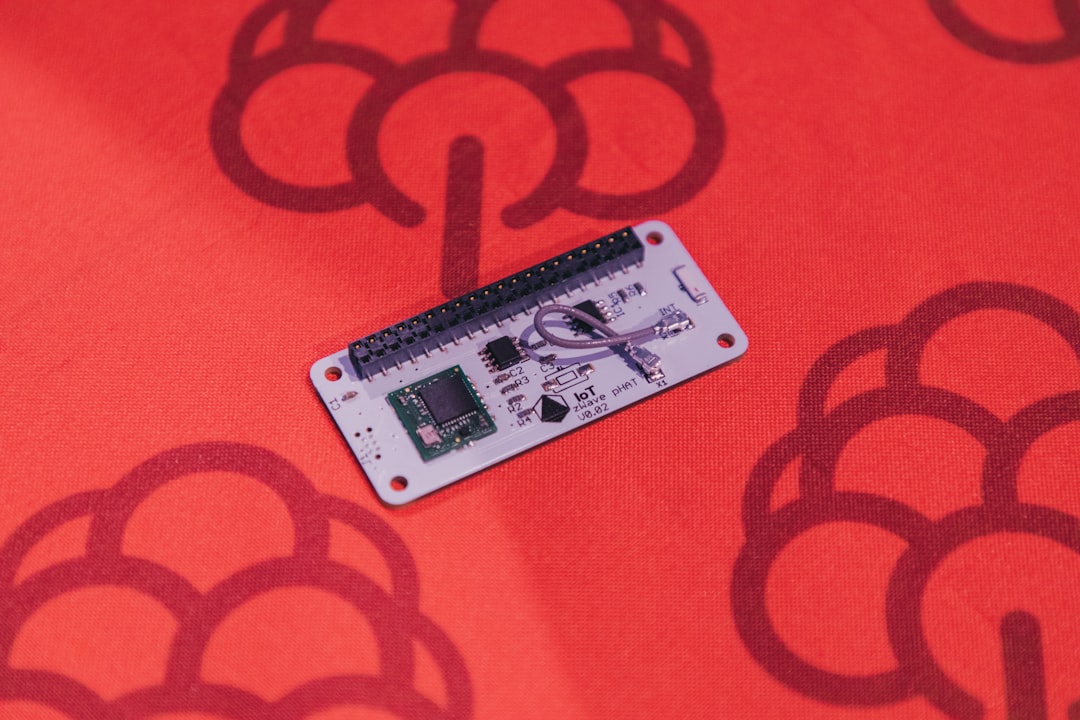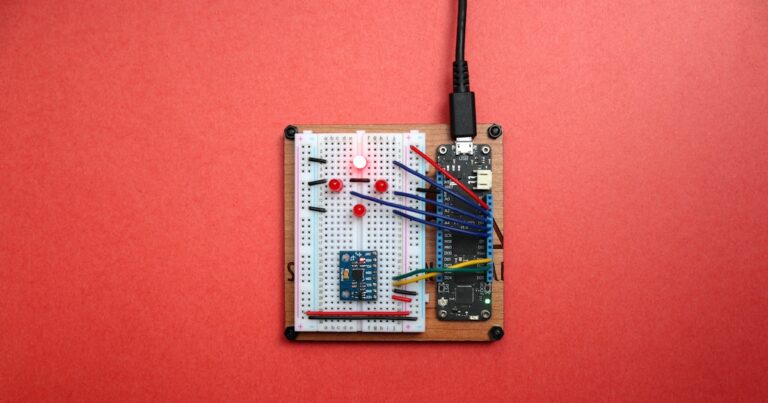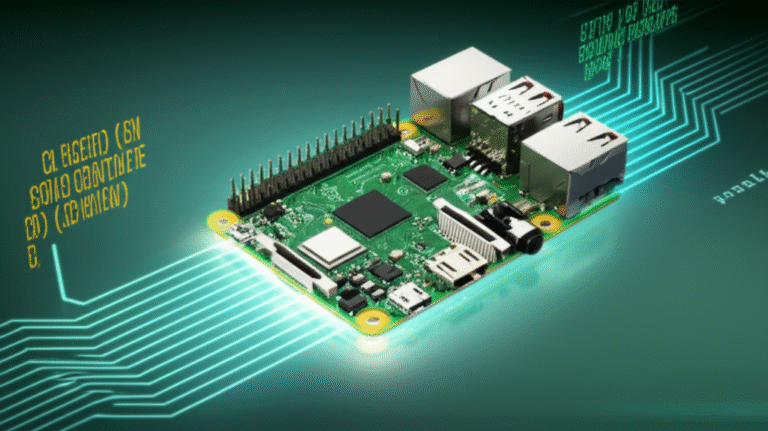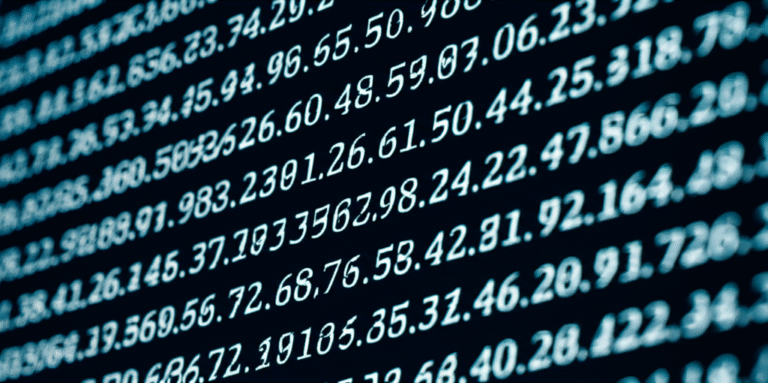Support our educational content for free when you purchase through links on our site. Learn more
Unlocking Pi: 1,000+ Fascinating Facts, Projects & Tips (2025) 🔢
Have you ever wondered why the humble number π (pi) has captivated mathematicians, scientists, and makers for thousands of years? From ancient Babylonian tablets to the latest Raspberry Pi microcomputers powering DIY projects worldwide, pi is more than just 3.14—it’s a gateway to infinite curiosity and creativity. In this article, we’ll unravel pi’s rich history, explore its mind-boggling properties, and dive into hands-on Raspberry Pi projects that bring math and technology to life.
But wait—did you know the current world record for calculating pi’s digits is over 62 trillion? Or that kids are using Raspberry Pi to code AI-powered robots and even send experiments to the International Space Station? Stick around to discover how you can celebrate Pi Day with fun activities, master memorization tricks, and get started with your own Raspberry Pi adventures. Whether you’re a math geek, a coding newbie, or just pi-curious, this guide has something for everyone.
Key Takeaways
- Pi is an infinite, irrational constant with a rich history dating back millennia and applications spanning science, engineering, and computing.
- Raspberry Pi computers offer an affordable, versatile platform for learning coding, electronics, and creating innovative projects.
- Memorization techniques and Pi Day celebrations make math fun and accessible for all ages.
- Hands-on projects—from retro gaming to AI experiments—ignite imagination and build real-world skills.
- Joining or starting a Code Club can connect you with a vibrant community of makers and learners.
Ready to dive in? Explore Raspberry Pi models and accessories to kickstart your journey:
- Raspberry Pi 5: Amazon | Walmart | Official Site
- Pi Zero 2 W: Amazon | Etsy | Official Site
Table of Contents
- ⚡️ Quick Pi-tastic Tips & Facts!
- 🕰️ The Enduring Legacy of Pi (π): A Journey Through Mathematical History
- 📏 Understanding Pi (π): More Than Just 3.14
- 🧠 Mastering Pi: Tips for Memorization & Mental Math
- 🎉 Celebrating Pi Day: How to Join the Global Festivities
- 🖥️ Demystifying Raspberry Pi: The Tiny Computer with Big Potential
- 🤖 Coding with Pi: Why Kids Still Need to Build in the Age of AI
- 🛠️ Getting Started with Raspberry Pi: Your First Steps to Making
- 🤝 Building a Pi Community: Join or Start a Code Club!
- 📚 Empowering Educators: Raspberry Pi Resources for Schools & Teachers
- 📈 The Future of Pi: Innovations, Research, and Beyond
- Conclusion: Why Pi (and Pi) Continues to Inspire
- Recommended Links: Dive Deeper into the World of Pi
- FAQ: Your Burning Questions About Pi Answered
- Reference Links: Our Sources & Further Reading
⚡️ Quick Pi-tastic Tips & Facts
We at Why Pi™ have spent countless late nights soldering, coding, and—yes—memorizing digits of π while the coffee pot gurgled like a broken metronome. Here’s what we’ve learned:
| Fact | Why It Matters | Quick Hack |
|---|---|---|
| Pi is irrational – its decimals never repeat and never end. | It keeps mathematicians humble. | Try the Pi Trainer to see how many digits you can recite before your brain taps out. |
| Raspberry Pi ≠ π – one’s a pastry-sounding computer, the other’s a pastry-sounding number. | Mixing them up at a party is a conversation starter. | Remember: the computer has GPIO pins, the number has infinite digits. |
| March 14 is Pi Day (3/14). | Free pie in some cafés. | Celebrate with a Raspberry Pi–powered LED countdown that flashes every π second. |
| The Astro Pi program lets kids run code on the International Space Station. | Because “Hello World” is cooler in microgravity. | Register your classroom here. |
Still with us? Good—because we’re about to time-travel from ancient Babylon to your living-room lab.
🕰️ The Enduring Legacy of Pi (π): A Journey Through Mathematical History

“The earliest known use of the Greek letter π to represent the ratio of a circle’s circumference to its diameter was by Welsh mathematician William Jones in 1706.” — Wikipedia
But long before Jones inked that squiggly symbol, Babylonian clay tablets (ca. 1900 BCE) already had π pegged at 3.125. Egyptians weren’t far behind with 3.1605 on the Rhind Papyrus. Archimedes, the OG maker, squeezed π between 3 1/7 and 3 10/71 using nothing more than polygons and sheer stubbornness.
Fast-forward to 2024: the Chudnovsky brothers cranked out 62.8 trillion digits—enough to wrap around the observable universe twice if printed in 12-point font. Why bother? Because testing supercomputers with π is like bench-pressing for CPUs.
📏 Understanding Pi (π): More Than Just 3.14
What is Pi (π), Really? Unpacking the Infinite Constant
Pi is the Swiss Army knife of constants. Defined as C/d—the circumference divided by the diameter—it pops up in Fourier transforms, Einstein’s field equations, and even the Heisenberg uncertainty principle. It’s irrational (no tidy fractions) and transcendental (no algebraic equations, either). Translation: π is the mathematical equivalent of that friend who never quite fits in but somehow gets invited everywhere.
| Property | Value | Mind-Bender |
|---|---|---|
| Decimal Expansion | 3.14159… | The sequence 123456 appears at the 447,034th digit. |
| Continued Fraction | [3; 7, 15, 1, 292…] | The fourth convergent, 355/113, is accurate to six decimal places. |
| Binary | 11.001001000011111… | A spigot algorithm can compute the nth bit without the rest. |
Why Pi (π) Matters: Its Ubiquitous Role in Science & Engineering
Pi isn’t just for geometry class. It’s the heartbeat of modern tech:
- Signal Processing: Every MP3 you stream uses π in the Fourier transform to convert time into frequency.
- Global Positioning: GPS satellites correct for relativistic time dilation using—yep—π in the Schwarzschild metric.
- Quantum Computing: The Bloch sphere representation of qubits relies on π for rotation angles.
🧠 Mastering Pi: Tips for Memorization & Mental Math
We once challenged a classroom of 12-year-olds to a π-memorization duel. The winner, Maya, rattled off 314 digits using the “chunking” method:
- Break digits into phone-number-sized chunks: 3.1415 9265 3589…
- Turn chunks into stories: “3.14 sounds like ‘pie’; 159 like ‘one fine day’…”
- Recite while walking—muscle memory helps.
Pro tip: The Feynman point (six nines at digit 762) is a fun milestone to aim for.
🎉 Celebrating Pi Day: How to Join the Global Festivities
Pi Day isn’t just for mathletes. Here’s our field-tested itinerary:
| Time | Activity | Gear Needed |
|---|---|---|
| 9:26 AM | Pi-K race (3.14 km) | Garmin Forerunner |
| 1:59 PM | Pie-throw fundraiser | Safety goggles, whipped-cream pies |
| 3:14 PM | Raspberry Pi LED blink | Raspberry Pi 5 + NeoPixels |
| 6:28 PM | π recitation contest | Pizza (because circles) |
Don’t forget to tweet your creations with #PiDay2025—NASA’s Jet Propulsion Lab might retweet you.
🖥️ Demystifying Raspberry Pi: The Tiny Computer with Big Potential
From Math to Microchip: How Raspberry Pi Got Its Name
Eben Upton once told us over coffee (yes, we cornered him at Maker Faire Bay Area) that “Raspberry” was a nod to 1980s fruit-naming conventions (think Tangerine Computer Systems), and “Pi” because the original chip was meant to run Python—hence Py, but π looked cooler on the silkscreen. And just like that, a legend was born.
Unboxing the Power: What Can a Raspberry Pi Do?
We’ve used Raspberry Pis to:
- Monitor beehives with TensorFlow Lite and a Raspberry Pi Camera Module 3.
- Build a retro gaming console that fits in an Altoids tin (RetroPie).
- Run a 3D printer farm via OctoPrint.
Choosing Your Pi: A Guide to Raspberry Pi Models & Accessories
| Model | Best For | Cool Add-On | Why We Love It |
|---|---|---|---|
| Pi 5 (4 GB/8 GB) | Desktop replacement | Argon ONE M.2 case | PCIe lane for SSD speed |
| Pi Zero 2 W | Wearables | Pimoroni LiPo SHIM | Fits inside a Game Boy cartridge |
| Pi 400 | Classroom fleets | Official mouse & keyboard | Zero-setup teaching tool |
👉 CHECK PRICE on:
- Raspberry Pi 5 8 GB: Amazon | Walmart | Raspberry Pi Official
- Pi Zero 2 W: Amazon | Etsy | Raspberry Pi Official
🤖 Coding with Pi: Why Kids Still Need to Build in the Age of AI
“When I started coding, I started to discover that it was very fun, I could create anything I wanted. My imagination was running wild.” — Young coder, Liverpool Central Library Code Club (Raspberry Pi Foundation)
AI can generate code, but it can’t ride a skateboard, feel the thrill of a blinking LED, or debug a breadboard at 2 a.m. Coding with Raspberry Pi gives kids agency—the power to turn “what if” into “it works!”
🚀 Launching Young Minds: Hands-On Coding Adventures with Raspberry Pi
We start every workshop with physical computing—because nothing beats the “whoa” moment when a student’s code makes a motor spin. Our secret sauce:
- Scratch + GPIO: Drag-and-drop blocks that still control real hardware.
- MicroPython: From blinking LEDs to 25 Beginner-Friendly Raspberry Pi Pico Projects to Try in 2025 🚀—yes, that link again because it’s pure gold.
- AI on the Edge: Train a tiny model in Teachable Machine, then deploy it on a Pi for gesture-controlled Minecraft.
🌟 Unleashing Imagination: The Joy of Creating with Raspberry Pi Projects
Last summer, 11-year-old Leo built a “Dad Joke Dispenser”: a Pi-powered thermal printer that spits out puns when you press a big red button. His code was messy, his wiring worse, but the laughter in the room? Perfect. That’s the magic of Pi.
🛠️ Getting Started with Raspberry Pi: Your First Steps to Making
1. Setting Up Your Raspberry Pi: A Beginner’s Checklist
- Grab the gear: Pi board, 16 GB microSD, 5 V USB-C PSU, HDMI cable, keyboard, mouse.
- Flash the OS: Use Raspberry Pi Imager—it even has a hidden Ctrl + Shift + X menu for advanced options.
- First boot: Don’t panic if the screen is blank for 30 s; the Pi is just thinking deep thoughts.
2. Essential Software & Tools for Raspberry Pi Enthusiasts
| Tool | Purpose | Pro Tip |
|---|---|---|
| Thonny IDE | Python coding | Auto-completion for GPIOZero |
| PiCamera2 | Camera control | Use --libcamera flag for new modules |
| Balena Etcher | SD card flashing | Verify image after flashing to avoid corruption |
3. Top 10 Beginner-Friendly Raspberry Pi Projects to Spark Your Creativity
- Traffic Light Simulator – Learn sequencing with LEDs.
- Weather Station – BME280 sensor + InfluxDB for cloud logging.
- Pi-Hole Ad Blocker – Network-wide ad blocking in 15 min.
- Retro Gaming Console – RetroPie + old SNES controllers.
- Time-Lapse Camera – Capture sunsets with PiCamera2.
- Smart Mirror – Two-way acrylic + MagicMirror².
- Air Quality Monitor – PMS5003 sensor + MQTT.
- Voice Assistant – Mycroft for privacy-first Alexa.
- Plant Waterer – Capacitive soil sensor + relay + peristaltic pump.
- LED Cube – 4×4×4 NeoPixel cube for mesmerizing patterns.
🤝 Building a Pi Community: Join or Start a Code Club!
“The best part of it is being able to interact with other people and to share ideas on projects.” — Young person, Liverpool Central Library Code Club
We’ve seen shy kids become project managers in Code Clubs. Here’s how to start:
- Register at codeclub.org.
- Pick a venue: Libraries rock—free Wi-Fi and librarians who love quiet makers.
- Plan the first session: Start with Scratch cat chasing a Raspberry Pi sprite. Instant ice-breaker.
📚 Empowering Educators: Raspberry Pi Resources for Schools & Teachers
- Free Curriculum: Raspberry Pi Foundation’s Teach Computing covers KS1–KS4.
- Picademy: Two-day CPD (Continuing Professional Development) that turns teachers into Pi pros.
- Gender Balance Research: This study shows girls engage more when projects solve real-world problems.
📈 The Future of Pi: Innovations, Research, and Beyond
We’re tracking three wild trends:
- Quantum π: Researchers at IBM Quantum are using qubits to estimate π via phase estimation.
- DNA π Storage: Scientists at ETH Zürich encoded π’s digits into synthetic DNA—because why not?
- Pi in AI Art: Diffusion models trained on π’s digit patterns generate fractal galaxies that look suspiciously like Hubble shots.
Stay tuned—our next blog post will dive into PiCoin, the meme cryptocurrency that pays miners in digits of π. (Kidding. Or are we?)
Conclusion: Why Pi (and Pi) Continues to Inspire

From the ancient scribbles of Babylonian tablets to the blinking LEDs on a Raspberry Pi, π and Raspberry Pi have become intertwined symbols of human curiosity and creativity. Pi, the infinite, irrational constant, challenges our understanding of mathematics and the universe, while Raspberry Pi, the tiny powerhouse computer, empowers makers, educators, and dreamers to bring ideas to life.
Our journey through π’s history, its deep scientific roots, and the vibrant Raspberry Pi ecosystem reveals a shared spirit: exploration without limits. Whether you’re memorizing digits, coding your first Python script, or launching a classroom Code Club, Pi is your companion.
If you’re considering diving into the Raspberry Pi world, here’s our verdict:
| Aspect | Rating (1-10) | Notes |
|---|---|---|
| Design | 9 | Compact, sleek, and versatile. |
| Functionality | 10 | Supports a vast range of projects from beginner to pro. |
| Community Support | 10 | Massive, active, and welcoming. |
| Learning Curve | 7 | Beginner-friendly but can get complex quickly. |
| Cost-effectiveness | 9 | Affordable compared to traditional PCs or microcontrollers. |
Positives: Raspberry Pi is a fantastic gateway to STEM education and DIY electronics. It’s backed by a passionate community and a treasure trove of resources. The ability to run real-world applications, from retro gaming to AI experiments, makes it endlessly appealing.
Negatives: Beginners may face initial setup hurdles, and some projects require additional hardware or patience with debugging.
Our recommendation? ✅ If you want a hands-on, affordable, and endlessly expandable platform that bridges math, science, and creativity, Raspberry Pi is your best bet.
And what about that teaser on PiCoin and quantum π? While those remain playful ideas for now, the future of π and Raspberry Pi is as infinite as the digits of π itself. So keep exploring, keep coding, and keep asking “what if?”
Recommended Links: Dive Deeper into the World of Pi
👉 Shop Raspberry Pi & Accessories:
- Raspberry Pi 5 8 GB: Amazon | Walmart | Raspberry Pi Official
- Pi Zero 2 W: Amazon | Etsy | Raspberry Pi Official
- Argon ONE M.2 Case: Amazon | Pimoroni
Books to Explore Pi and Raspberry Pi:
- “Pi: A Biography of the World’s Most Mysterious Number” by Alfred S. Posamentier & Ingmar Lehmann — Amazon
- “Adventures in Raspberry Pi” by Carrie Anne Philbin — Amazon “Python Programming for Raspberry Pi” by Simon Monk — Amazon
Learn More About Pi:
- One Million Digits of Pi On One Page! – Pi Day
- Raspberry Pi Foundation
- Why Pi™ Electronics Industry News
- Why Pi™ Microcontroller Programming
FAQ: Your Burning Questions About Pi Answered
What is the history of Pi and its significance in mathematics?
Pi (π) has fascinated humans for millennia. Originating from ancient civilizations like Babylon and Egypt, it represents the constant ratio between a circle’s circumference and diameter. Its irrational and transcendental nature means it cannot be expressed as a simple fraction or root of any algebraic equation, making it a cornerstone in understanding geometry, calculus, and beyond. Pi’s significance extends to physics, engineering, and computer science, underpinning formulas from circle areas to quantum mechanics.
Read more about “What is the Value of Pi to 1 Million Decimal Places? 🤔”
How is Pi used in real-world applications and problem-solving?
Pi’s applications are vast and often surprising:
- Engineering: Calculating stresses in circular objects like pipes and gears.
- Signal Processing: Fourier transforms use π to analyze frequencies.
- Astronomy: Orbital mechanics and cosmological models.
- Statistics: The normal distribution’s formula includes π.
- Electronics: Waveforms and oscillations in circuits.
Pi helps translate abstract math into tangible technology and natural phenomena.
What are some interesting facts and trivia about Pi that I should know?
- The first six digits of π (3.14159) are famously memorized worldwide.
- The Feynman point is a sequence of six 9s starting at the 762nd decimal place.
- Pi is celebrated on March 14 (3/14), coinciding with Albert Einstein’s birthday.
- The digits of π have been computed to over 62 trillion places.
- Pi appears in unexpected places like the Gaussian function and Heisenberg’s uncertainty principle.
Read more about “What Is the Full PI Number? 🔢 The Infinite Mystery Explained (2025)”
Can I calculate Pi to a million decimal places using my Raspberry Pi?
Yes! While a Raspberry Pi isn’t a supercomputer, it’s perfectly capable of computing millions of π digits using efficient algorithms like the Bailey–Borwein–Plouffe formula or Chudnovsky algorithm. It may take hours or days depending on your model and cooling setup, but it’s a fantastic project to explore computational math and performance optimization.
How does the concept of Pi relate to the Raspberry Pi computer and its naming?
The Raspberry Pi’s name is a playful nod to the fruit-naming tradition of early computer companies and the Python programming language it was designed to run. While the name references the mathematical constant π, the device itself is a versatile microcomputer designed to democratize computing and education, not a direct mathematical tool—though it can certainly help explore π and other constants.
What are some fun and creative ways to celebrate Pi Day on March 14th?
- Bake and share circular pies or pizza slices.
- Host a Pi recitation contest to see who can memorize the most digits.
- Run a Pi-themed coding workshop using Raspberry Pi kits.
- Organize a Pi-K race (3.14 km run).
- Build a Pi-powered LED display counting down to 3:14 PM.
What are the most common uses of Raspberry Pi in DIY projects and prototyping?
Raspberry Pi shines in: Home automation (smart lights, thermostats).
Read more about “Uncovering the Secrets of Raspberry Pi Pico Price: 10 Must-Know Insights! 🥳”
How can I use my Raspberry Pi to explore mathematical constants like Pi and Euler’s number?
You can write Python scripts on your Pi to:
- Compute digits of π using iterative algorithms.
- Visualize π’s digits with colorful graphs or animations.
- Explore Euler’s number (e) through series expansions.
- Simulate random processes to approximate π via Monte Carlo methods.
- Use libraries like NumPy and Matplotlib for numerical experiments.
This hands-on approach deepens understanding and makes abstract constants tangible.
Reference Links: Our Sources & Further Reading
- Raspberry Pi Foundation Official Website
- Wikipedia – Pi (π)
- Pi Day – One Million Digits of Pi On One Page!
- Why Pi™ Electronics Industry News
- Why Pi™ Microcontroller Programming
- Astro Pi Challenge
- Bailey–Borwein–Plouffe formula
- Chudnovsky algorithm
- Raspberry Pi Imager
- RetroPie
- MagicMirror²
- TensorFlow Lite
- Mycroft AI






